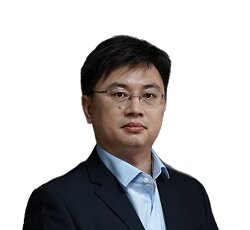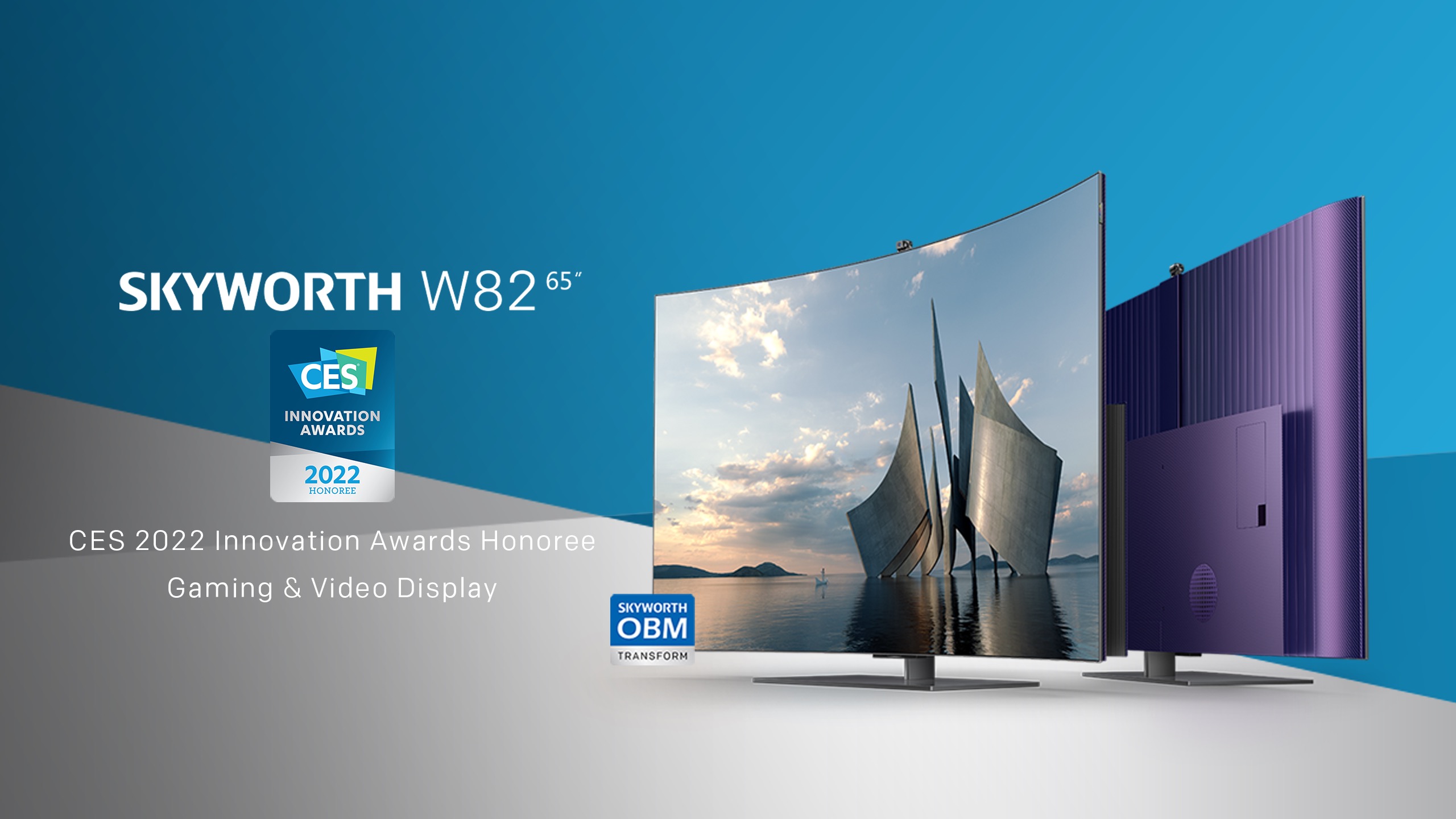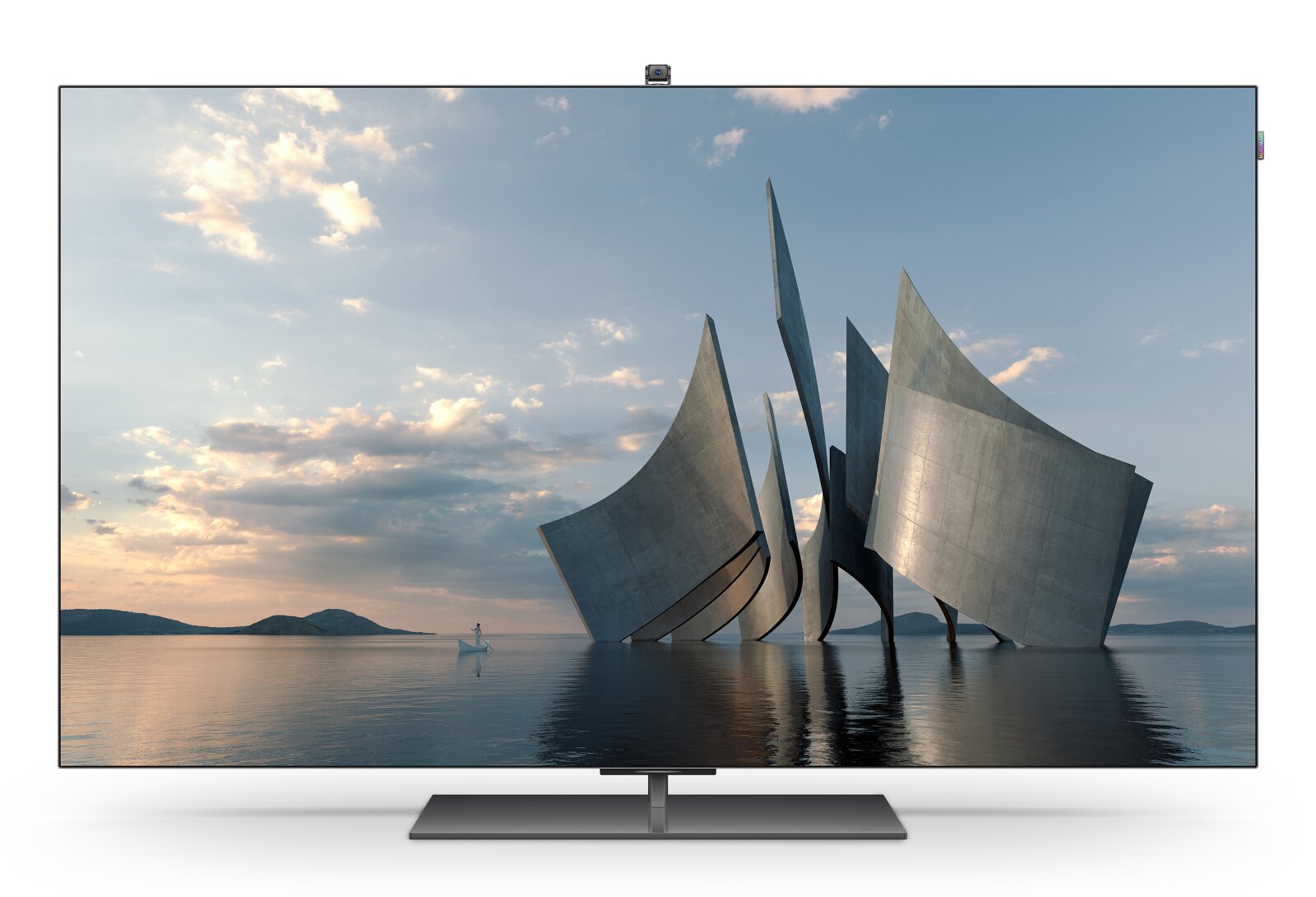Li Jian, CEO on Duty and General Manager of the Display Technology Division at Skyworth TV lifts the lid on the R&D challenges and innovations that brought the world’s first transformable TV screen to life. This guest article has been brought to you on World Television Day.

For the last two years, the pandemic has greatly increased screen time as people all around the world spend more time at home. According to Ofcom, the UK’s communications regulator, UK adults spent a daily average of five hours and 40 minutes watching TV and online video content in 2020, up 47 minutes on the previous year. TV’s have now evolved to become so much more than just a device to watch TV on. Now, more than ever, consumers expect their TVs to serve as entertainment hubs, the primary vehicle through which they can play games, watch movies, listen to music, catch up on sports matches or virtually transport themselves to somewhere new through a travel documentary.
This has led to increased demand for smart TVs with more immersive capabilities, helping viewers fully experience what they are watching as though they were there in person. To react to this Skyworth set out on a journey to create a TV that meets these evolving needs, with a display that would be capable of delivering the ultimate viewing experience for e-sports players, film buffs, soap opera fanatics, sports fans and more.
The Quest to Develop a Flexible Screen
Skyworth’s R&D team was determined to produce a transformable OLED TV, allowing the screen to be viewed curved or flat, providing more options for immersive entertainment. With strong ambitions, the R&D team began to develop various technical solutions and applied for various patents. However, during the early stages of product development, the team encountered a series of complex challenges and technical difficulties that needed to be addressed.
The first challenge was how to create the transformable form of the screen. Choosing the right kind of backplane materials for the perfect lamination with the OLED screen was a top priority during the R&D process. After countless months of experimenting with different design combinations, adjusting and optimizing solutions on four different backplane materials, the R&D team finally opted for a high-tension and high-yield-strength backplane material, aerospace-grade high gloss aluminum, which enabled greater flexibility of the screen without sacrificing its solid foundation. To achieve the ideal level of flatness of the backplane, the design team had to make multiple modifications and adjustments to the mold, which allowed the material to be at the most optimal form, while fully automated lamination technology eliminated displacement issues of the glass and the backplane as the screen transforms its shape.
Achieving the Optimum Electric Bending Mechanism
Having a flexible OLED screen with a variable curvature is far from enough – an electric bending mechanism was also required to enable the flexible screen to perform straightening and bending motions.
After much trial and error selecting the right material to use, the team eventually settled on austenitic stainless-steel to create the bending mechanism, thanks to its favorable corrosion resistance, temperature resistance and bending performance. To boost the mechanism, the team also developed a multi-stage low-noise reduction gearbox, equipped with a self-locking function, which provided a powerful kinetic energy greater than 450 kgf.cm to aid bending.
To reduce friction between the parts and reduce noise, the team also repeatedly conducted tests on the assembly precision of the bending mechanism. The high-speed, brushless hall motor, which only produces minimal sound, ensured the overall stability and accuracy of the bending motion.
Ensuring a Smooth Transformation from Flat to Curved
To ensure the transition from a flat to curved screen was as smooth as possible, the R&D team decided to create a rear cover for the screen, which was comprised of 37 fish-scale-like pieces with a high dimensional accuracy, solving the problem of displacement between the rear cover and the screen body when bent. This allowed the whole screen body to be stretched and contracted freely.
The next challenge was to deal with the abnormal noise and size discrepancies produced while the screen transformed from flat to curved. To deal with the size discrepancies, the R&D team adhered to extremely strict size requirements for the scales, along with high-precision mold manufacturing and injection molding. A total of 37 scales were used for splicing, and the size accuracy of each fish scale was controlled within +/-0.05mm to achieve the most ideal splicing state. Next, a special paint process was adopted to improve the abnormal noise caused by friction during the movement of the scales.
Finally, the R&D team decided to equip the screen with 1000R smart bending technology, enabling the TV to adjust its curvature according to the optimum viewing distance of 3.5m to 1m. It also provides a viewing curvature of 2000R in movie viewing mode and 1500R in gaming mode, enhancing movies and games alike.
The Final Product: Skyworth’s First Transformable OLED TV
Revolutionizing the TV industry, after undergoing numerous revamps and modifications, the Skyworth W82 was finally developed. Launched in March 2021, it is the world’s first ever mass-produced transformable OLED TV which transforms from a flatscreen TV to a curved screen with a simple click of the remote. Not only is it a technologically advanced masterpiece, but we also believe it is a beautiful centerpiece for any home, delivering immersive home entertainment experiences, no matter what you are watching.
We are proud of our R&D team’s efforts in creating such an innovative product and are delighted to have received several accolades for our achievements. The Skyworth W82 was recently named an Honoree in the “Gaming” and “Video Display” categories at the CES® 2022 Innovation Awards and earlier this year, we were the winner of the Red Dot Design Awards in the Product Design category. Looking ahead to 2022, our R&D team will continue to innovate, and we look forward to bringing even more exciting display and gaming solutions to our customers in the near future – stay tuned! (Li Jian)



